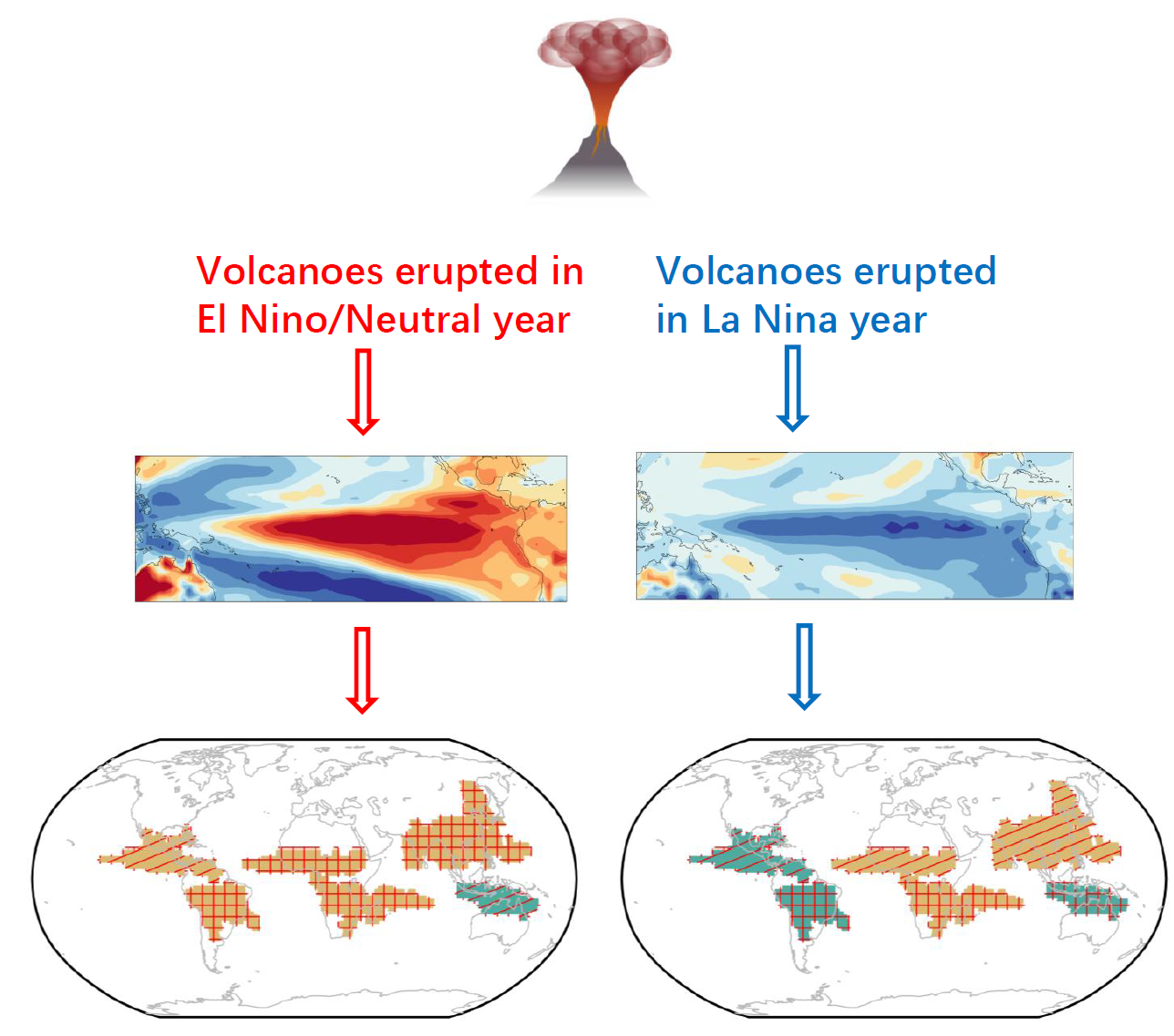Volcanic eruptions inject sulfur gases high into the atmosphere, forming sulfate aerosol and blocking the incoming sunlight like a parasol. This causes decreased global monsoon rainfall, but the regional monsoon responses are different, which are dominated by the pre-eruption El Niño-Southern Oscillation (ENSO) phases, according to a study by ZUO Meng, a postdoctoral fellow from the Institute of Atmospheric Physics (IAP) of the Chinese Academy of Sciences.
Monsoon rainfall affects over two-thirds of the world's population. Insufficient monsoon rainfall brings drought and famines to many parts of the world, while too much rainfall causes floods.
Uncovering the relationship between volcanic eruptions and monsoon precipitation relies on the proxy-based (e.g., tree ring, coral, etc.) paleoclimate reconstructions and numerical simulations during the last millennium. However, recent studies have found significant differences between the results of model simulations and reconstructions, but the reasons remain unclear.
ZUO, together with her mentor Prof. ZHOU Tianjun and Assoc. Prof. MAN Wenmin from IAP, analyzed large sets of climate model simulations to investigate the impact of volcanic eruptions on tropical sea surface temperature and global monsoon precipitation under three different ENSO phases.
The researchers found that under ENSO neutral- and warm-phase initial conditions, the Pacific favored an El Niño-like anomaly after volcanic eruptions, while La Niña-like sea surface temperature (SST) anomalies tended to occur following eruptions under ENSO cold-phase initial condition.
They further put forward the underlying mechanism. Since the cold initial condition is associated with stronger upper ocean temperature stratification over the eastern Pacific than normal, the easterly anomalies triggered by surface cooling over the tropical South America continent can generate changes in SST more efficiently, causing La Niña-like SST anomalies.
Whereas under warm initial condition, the easterly anomalies fail to develop and the westerly anomalies still play a dominant role, thus forming an El Niño-like SST anomaly. Such SST response further regulates the monsoon precipitation changes through atmospheric teleconnection, which will further affect the intensity and sign of precipitation response in submonsoon regions.

Schematic diagram of global monsoon precipitation responses to volcanic eruptions occurred during different ENSO phases. (Image by ZUO Meng)
"Our results imply that the SST response to volcanic eruptions can critically depend on the state of ENSO phases in the pre-eruption winter. We suggest that when analyzing the SST and monsoon responses to volcanic eruptions in models or observations, special attention needs to be paid to the background oceanic states during the pre-eruption period," said ZUO.





